Kecak evolved from an ancient Balinese trance ritual called Sanghyang, performed to invite divine spirits into dancers' bodies, often to ward off evil or heal the community.
The Kecak dance is a mesmerizing Balinese performance that originated in the early 1930s through the collaboration of Balinese dancer Wayan Limbak and German artist Walter Spies. Drawing inspiration from the ancient Sanghyang trance ritual, where villagers would chant to ward off evil spirits, the creators wove dramatic elements from the Hindu epic Ramayana into the dance.
Unlike traditional dances, Kecak is performed by a chorus of bare-chested men chanting “cak” in hypnotic rhythm, without musical instruments. The performance’s circular formation, trance-like energy, and fiery visuals have made it an iconic symbol of Balinese culture that unites mythology, spirituality, and spectacle in one unforgettable event.
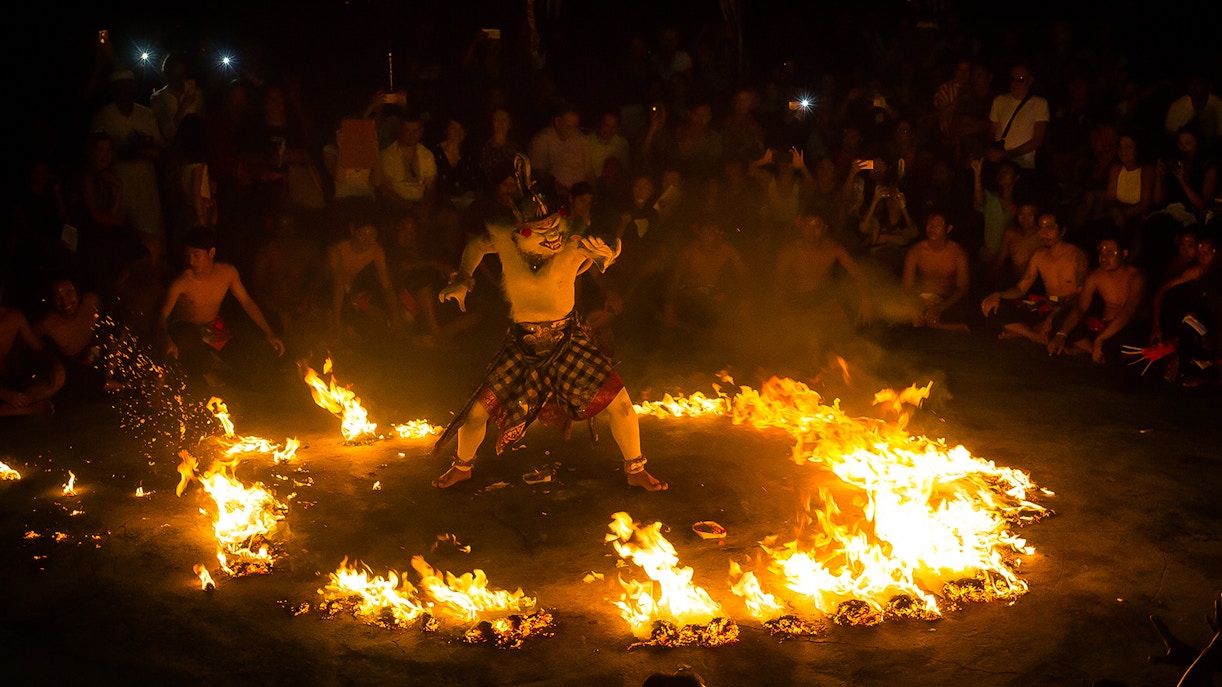
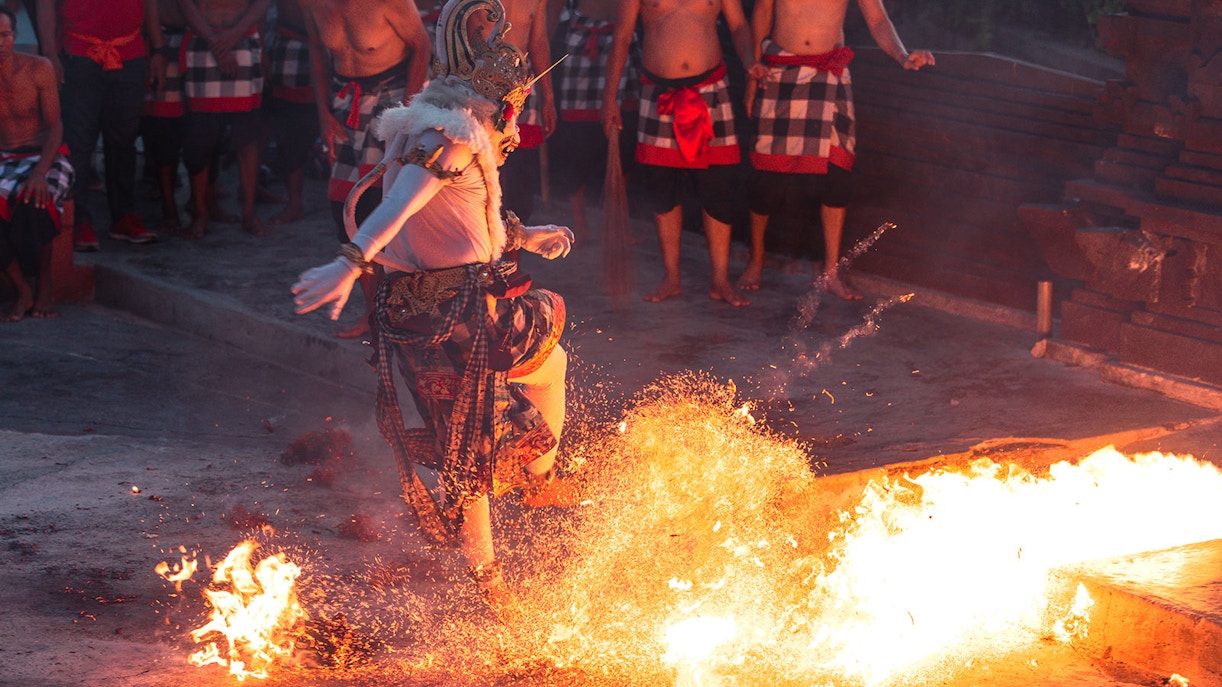
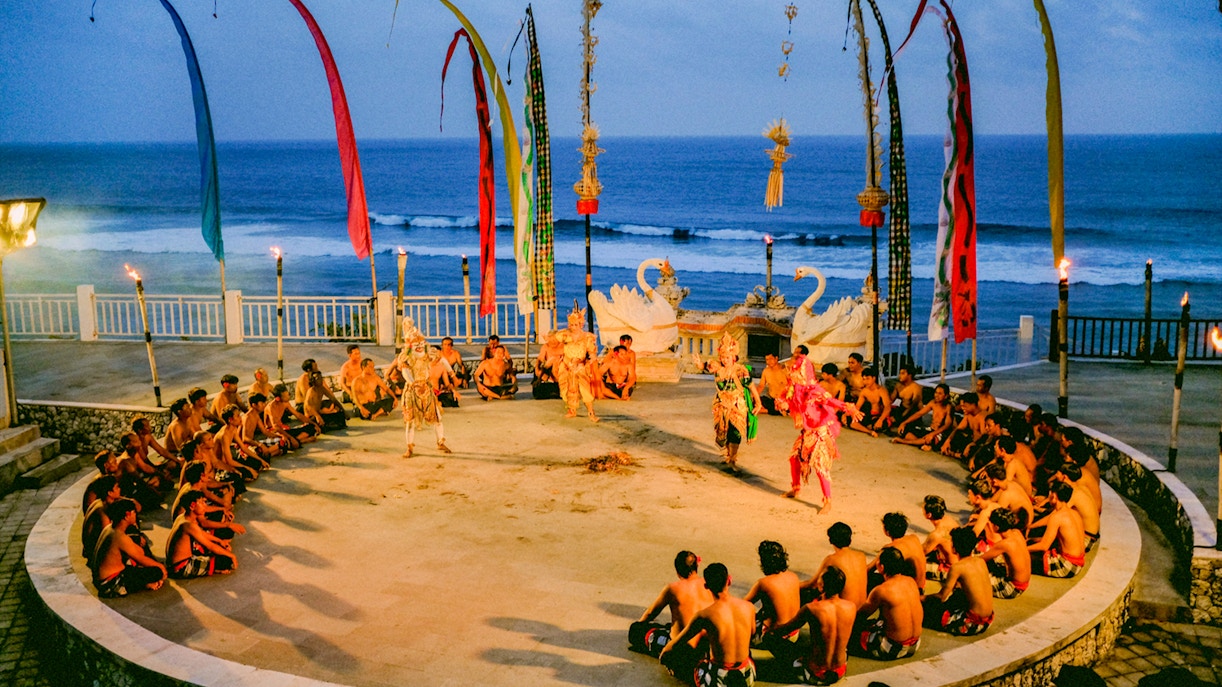
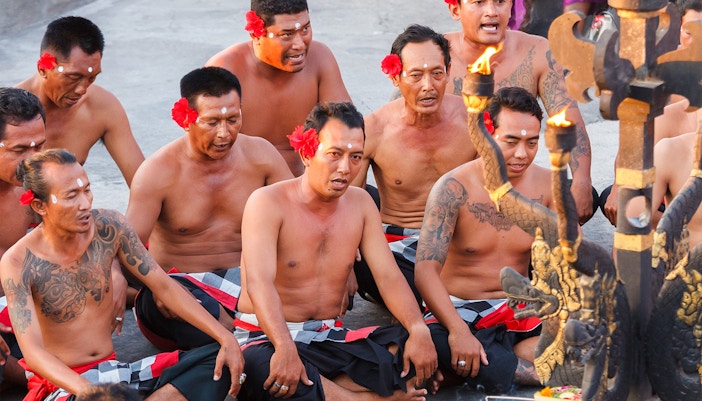
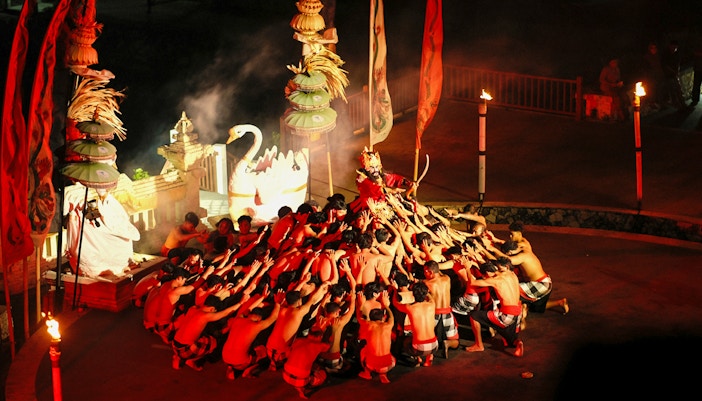
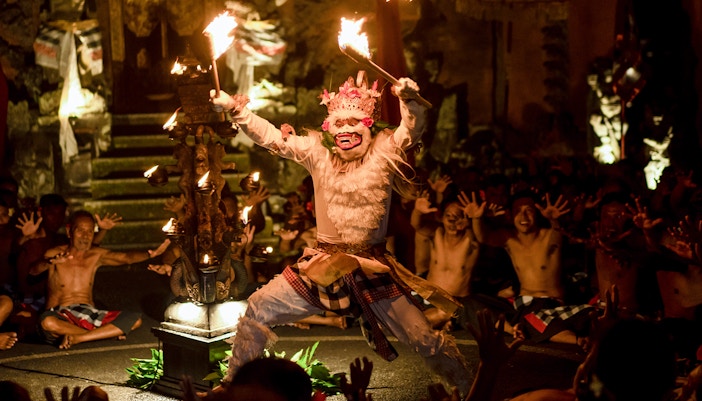
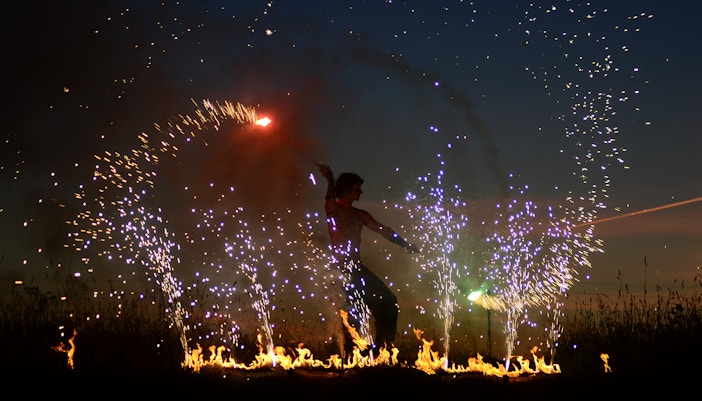
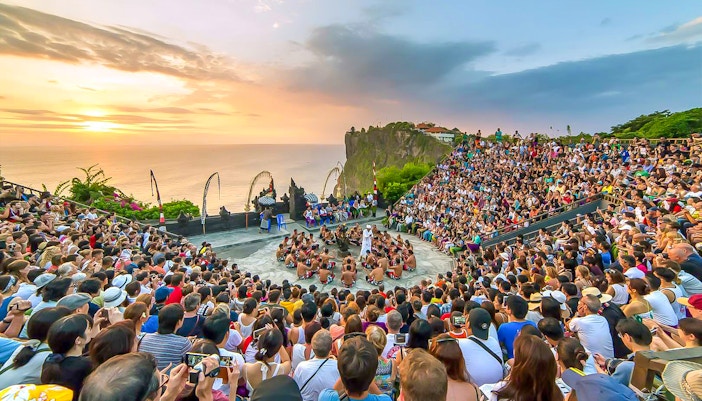
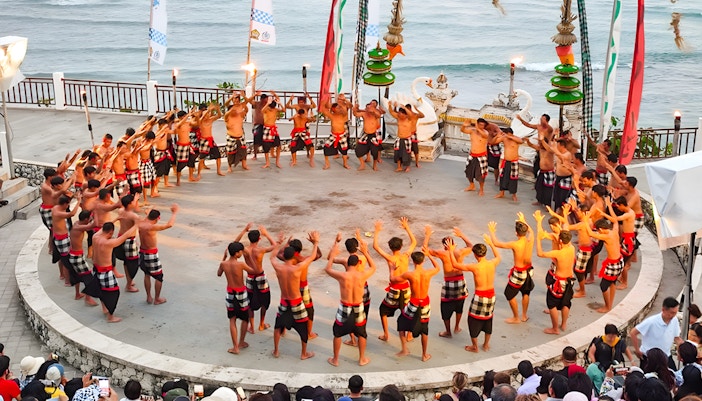
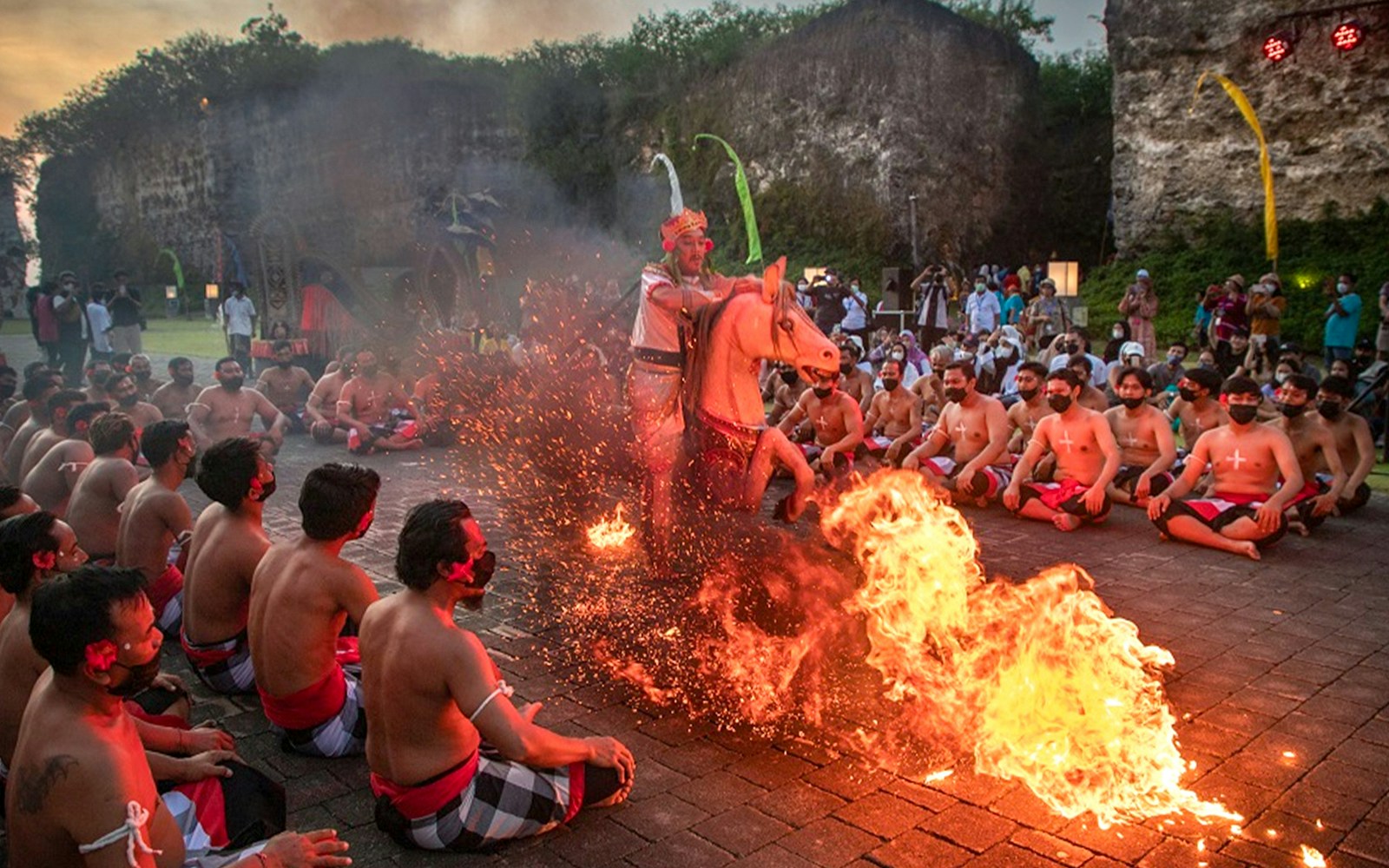
Traditional Balinese Kecak Dance depicting the Ramayana story with fire and dramatic gestures.
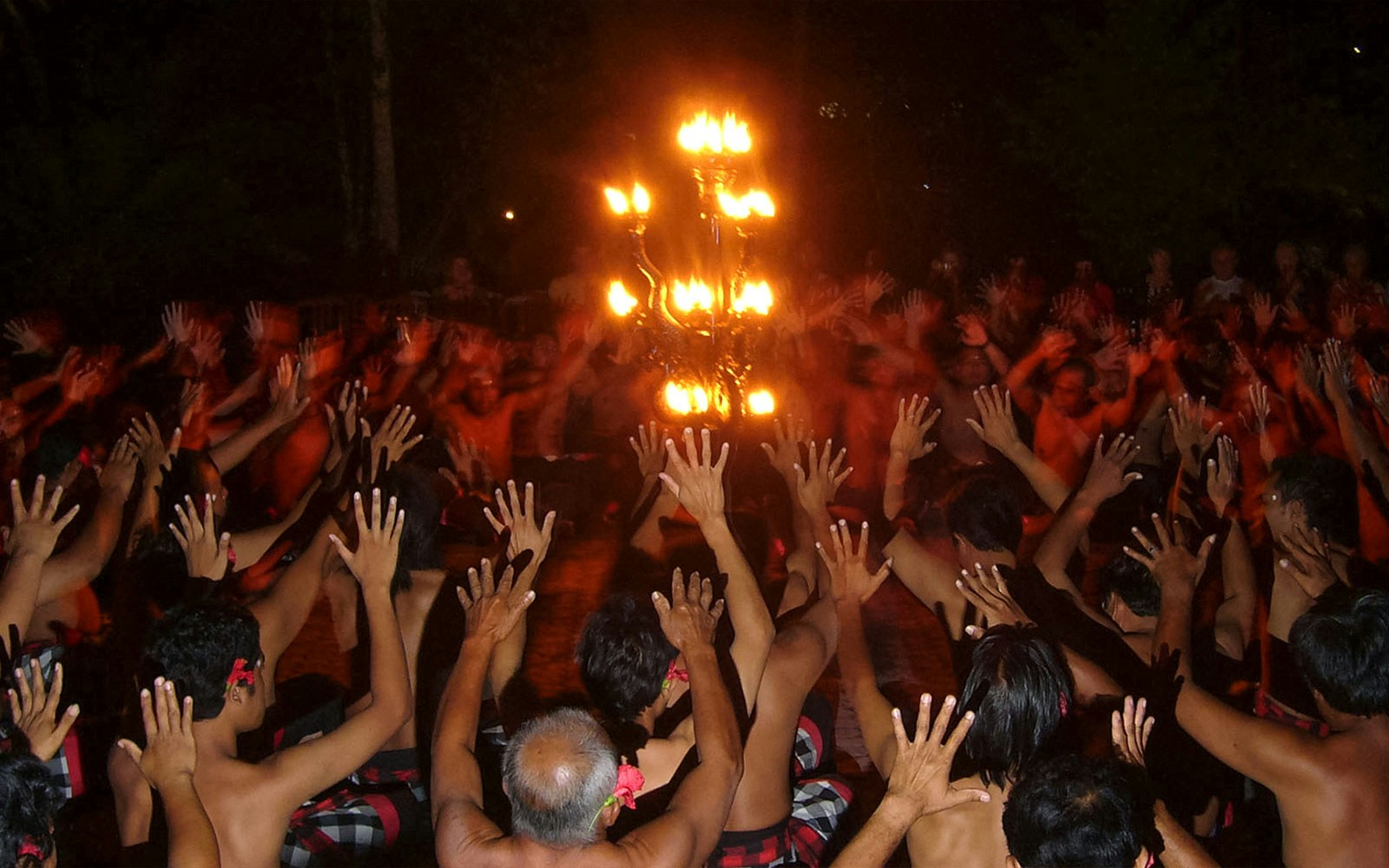
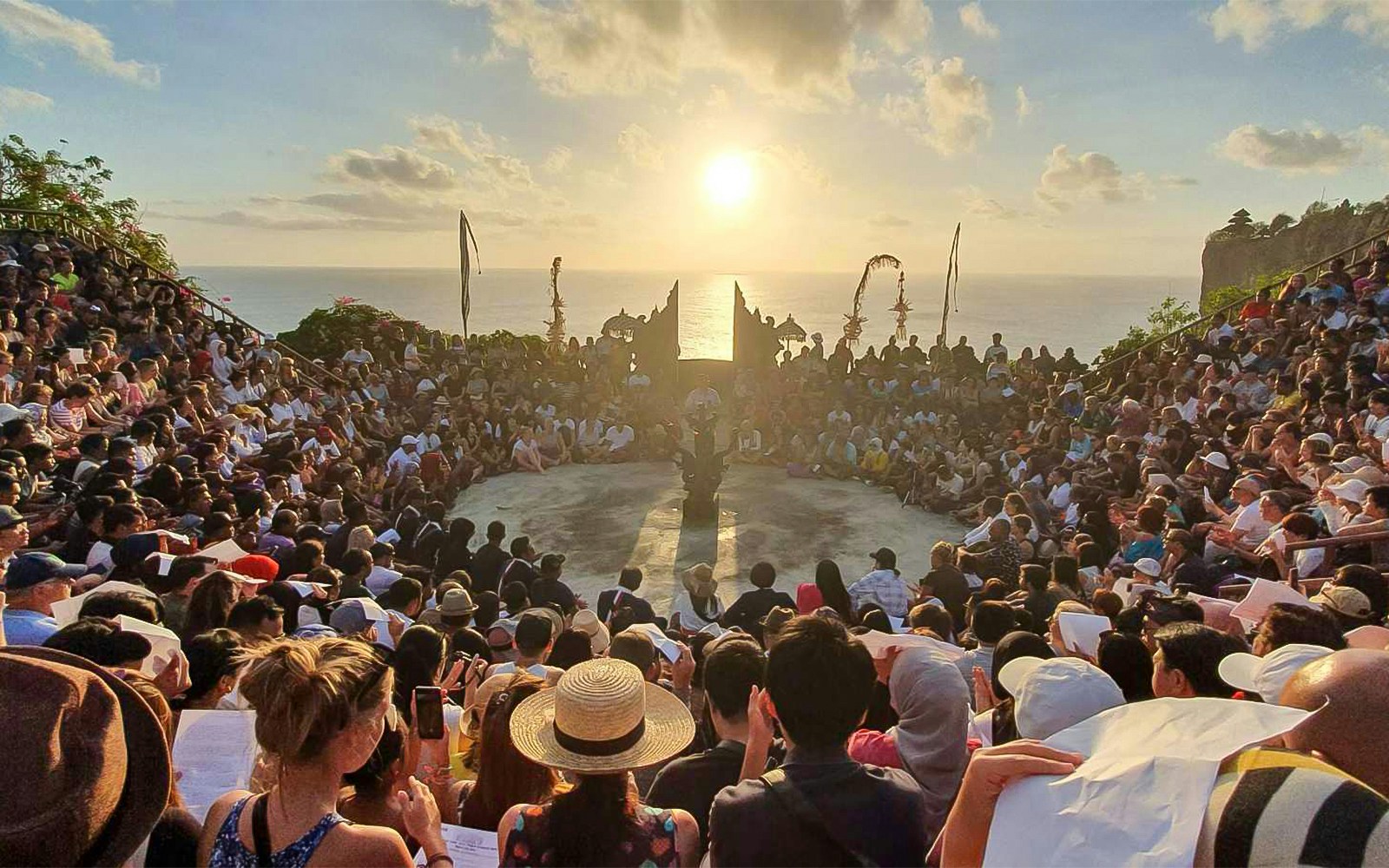
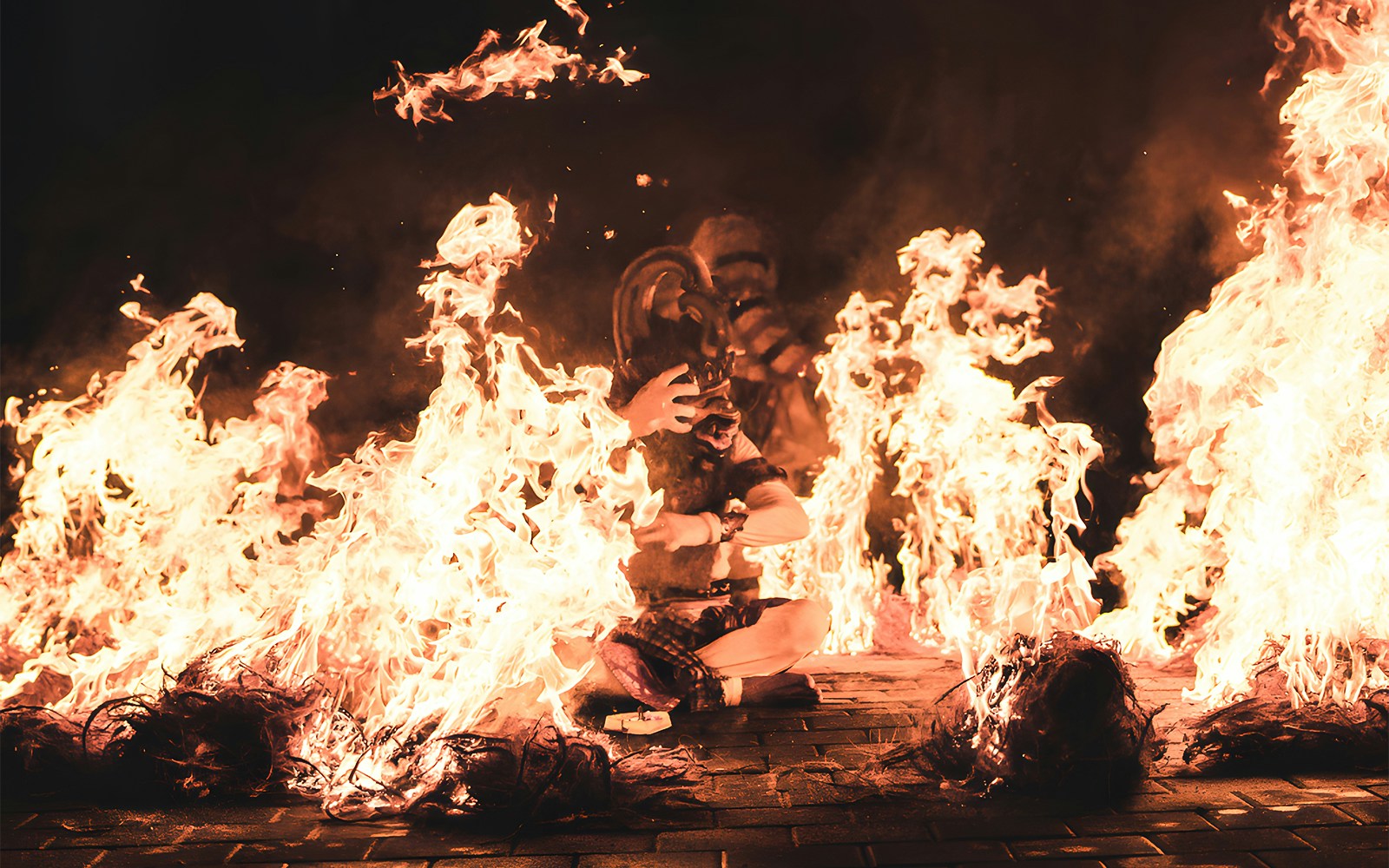
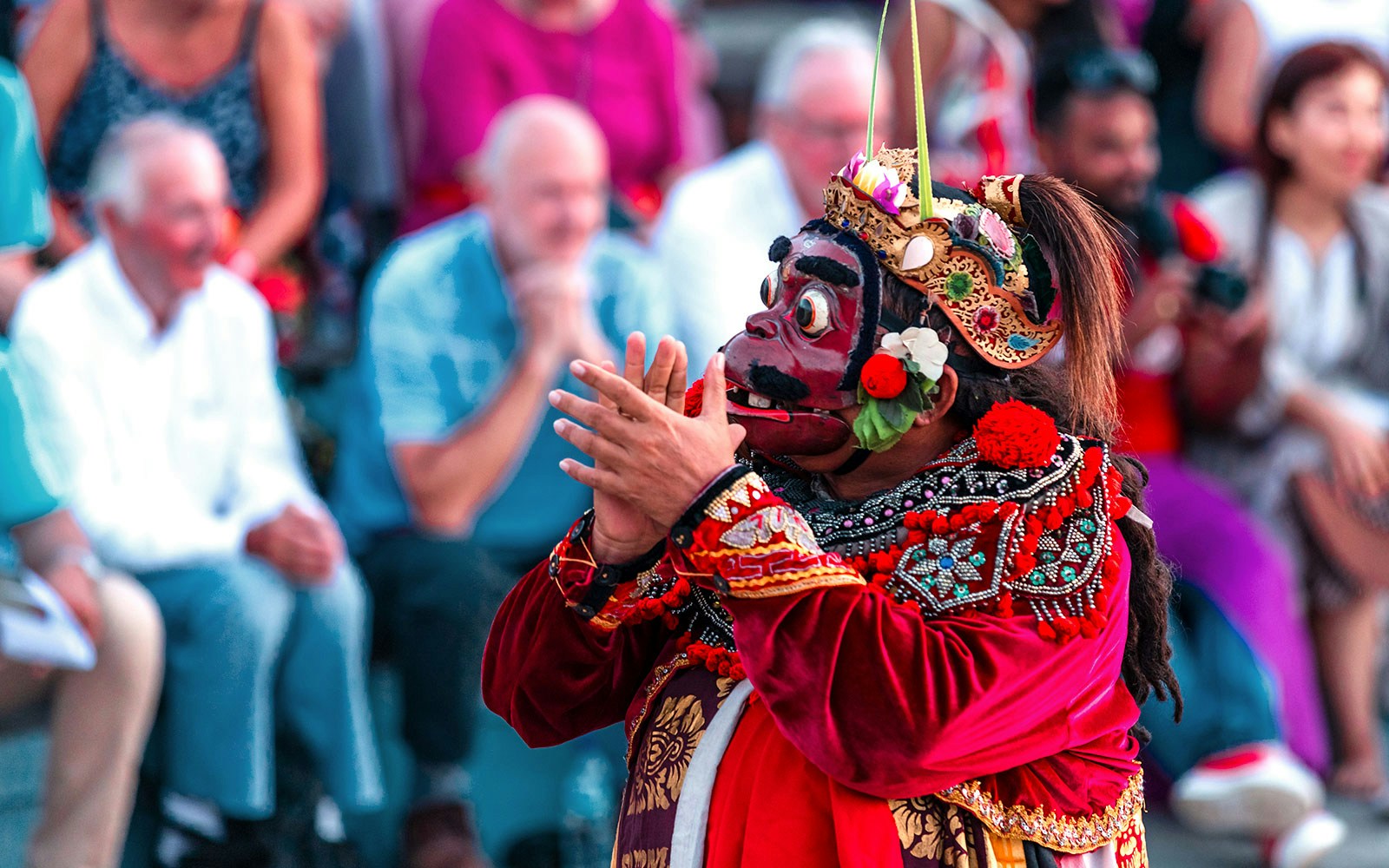
The Kecak Dance is a Balinese traditional dance that combines rhythmic chanting, fire elements, and storytelling from the Ramayana epic.
The Kecak Dance is performed in several places in Bali, with the most famous venue being Uluwatu Temple during sunset.
The Kecak Fire Dance was developed in the 1930s by Balinese dancer Wayan Limbak and German artist Walter Spies, blending ritual, storytelling, and theatrical drama.
It was inspired by the Sanghyang trance ritual, a sacred Balinese practice intended to invite spiritual protection and dispel evil through mass chanting.
The dance dramatizes scenes from the Ramayana, focusing on Prince Rama’s battle to rescue his wife Sita from the demon king Ravana, with Hanoman, the monkey go,d playing a key role.
Fire symbolizes purification and spiritual protection, climaxing when Hanoman leaps through flames to rescue Sita and defeat evil.
Elements of trance derive from Sanghyang, where performers are believed to be possessed by spiritual forces, amplifying the ritualistic energy and authenticity of the show.
The circle of chanting men symbolizes unity, protection, and the communal energy needed to ward off bad spirits—a practice echoed from ancient Balinese rituals.
The circle of chanting men symbolizes unity, protection, and the communal energy needed to ward off bad spirits—a practice echoed from ancient Balinese rituals.
Iconic sites like Uluwatu Temple and Tanah Lot offer dramatic backdrops—sunset cliffs or wave-battered rocks—that enhance the mythic and spiritual atmosphere of the dance.
Unlike ornate dances with costumes and instruments, Kecak is marked by mass voice chanting, trance, and fire, blending ritual and storytelling in an open-air arena.
While adapted for tourism, its roots remain deeply spiritual, retaining elements of ancient Balinese rituals, protection rites, and communal prayer.
The most celebrated venues include Uluwatu Temple, Tanah Lot, Pura Dalem Ubud, and GWK Cultural Park, each offering unique settings and atmospheres for guests.
Yes, Kecak’s dramatic sounds, communal energy, and sunset settings have helped shape Bali’s reputation as an island of exotic spirituality and vibrant culture.